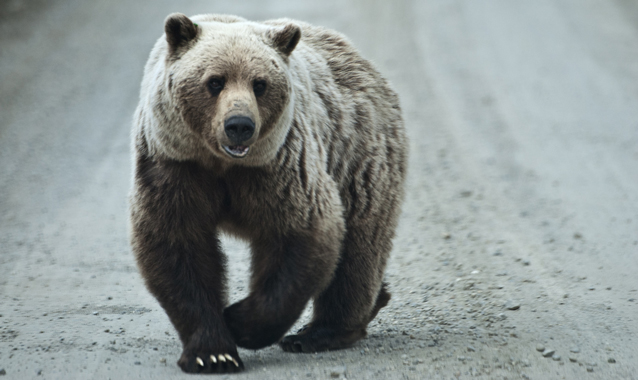
NPS Photo / Kaitlin Thoresen
Bear Monitoring
Grizzly Bear Monitoring - North
Bears are radio collared and tracked on the north side of the Outer Range between the Kantishna Hills and the east end of the park. The objective of this study is to document the ecology of grizzly bears and their movements on the northeast portion of the park. This is important especially outside the north park boundary where they may be subject to legal harvest and possible future intensive management efforts by the State of Alaska.
2015 Update
In September of 2015, bear captures were conducted with use of a helicopter and support from fixed-wing aircraft. The goal was to remove collars from 13 bears and pick up two dropped collars. Due to extremely undesirable weather during the capture period, only four bears were captured and had collars removed. One dropped collar was retrieved and two additional collars that were detected as dropped during the capture were also collected.
GPS collars used in this study store location data on board and must be retrieved to acquire the data. Location data that has been retrieved so far indicates that at least five collared bears collared so far as part of this study have crossed the north park boundary. There are currently seven bears still wearing radio collars as part of this study.
Plans for 2016 were initially to remove all remaining radio collars and download and analyze location data. However, based on changes in hunting regulations outside the park the decision was made to continue the project for at least two more seasons. The seven existing collars will be removed so that location data can be downloaded and analyzed. Also, six new Iridium collars and nine store-on-board collars will be deployed in May. The Iridium collars will give closer to real time location data and are able to be accessed remotely.
Bear Management
Bear problems at Denali escalated in the 1970’s and 1980’s. By 1982, Denali had the highest rate of backcountry bear incidents of any U.S. national park with a significant grizzly population and high backcountry use. Bears were getting food from backpackers and poorly-handled garbage, causing property damage, and injuring people. Between 1946 and 1983, 48 bears were relocated or destroyed in the park. Denali’s Bear Management Plan (BMP) was developed to address bear problems and reduce bear-human conflicts. By educating staff and visitors about bears and providing bear-resistant storage for food and trash, the park has dramatically reduced conflicts with bears and other wildlife. In 1984, Bear-Resistant Food Containers (BRFC) became mandatory for backcountry users. By 1985, incidents with bears in the backcountry had dropped nearly 90%. The last problem with a food-conditioned bear in one of the Denali campgrounds was in 1994. Since 1983, only four bears have been destroyed, one sent to a wildlife park, and two relocated by the National Park Service.
2015 Update
Between May 30, 2015 and September 18, 2015, 61 bear-human interactions were documented. These interactions were classified as 49 encounters and four incidents.Of the four interactions classified as incidents this season, one occurred in the frontcountry and three occurred in the backcountry.
Backcountry:
A total of 50 interactions occurred in the backcountry. Of these backcountry interactions, three were considered incidents. Of the three incidents, only one involved property damage and two were general incidents. Both the number of reported backcountry interactions and backcountry incidents decreased from last year
Frontcountry:
Although only 20% of human-bear interactions were reported to occur in the frontcountry, 40% of the interactions classified as “Incidents” occurred in the frontcountry. This is significant because although fewer bear-human interactions occur in the frontcountry they are generally more likely to result in an incident relative to the backcountry human-bear interactions.
| Type of Interaction | Frontcountry | Backcountry | Total |
| Observation | 1 | 6 | 7 |
| Encounters | 8 | 41 | 49 |
| Incidents | 1 | 3 | 4 |
| Control Actions | 1 | 0 | 1 |
| Total | 11 | 50 | 61 |
More Information
Last updated: May 24, 2016
